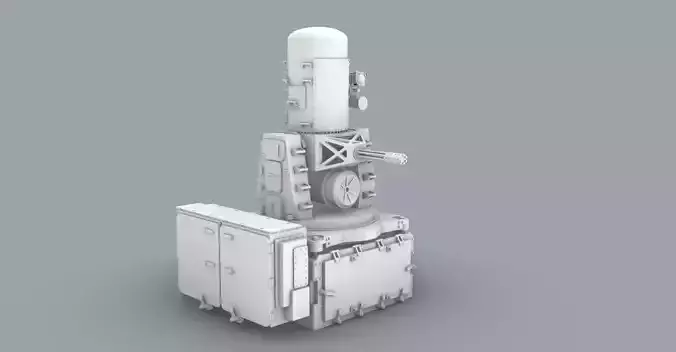1/15
3D Model of the famous PhalanxCIWS, made for 3D Model of HMCS Athabascan.
Model is ready to be used in 3D Printing, Design, CNC..
Dimensions
Length: 40.52mm
Width: 41.99mm
Height: 55.88mm
Includes OBJ and STL file.
About
The Phalanx Close-In Weapons System, commonly known as Phalanx CIWS, is a formidable and highly effective naval defense system designed to protect ships from various threats, particularly anti-ship missiles and aircraft. Developed by the American defense contractor Raytheon, the Phalanx CIWS has been in service with many naval forces around the world for several decades. It represents a critical component of a ship's layered defense, offering a last-ditch line of protection when other defensive measures have been exhausted. Phalanx CIWS is renowned for its rapid response and unparalleled accuracy. The system employs a sophisticated radar system to track incoming threats, and once a target is detected, it can unleash a barrage of high-speed 20mm tungsten bullets. These bullets are designed to intercept and destroy incoming missiles and aircraft before they reach their intended targets, thereby reducing the risk of damage or destruction to the ship. The system's automated nature and quick reaction time make it a vital asset for modern naval vessels, providing a crucial layer of defense in an ever-evolving threat landscape. One of the most distinctive features of the Phalanx CIWS is its close-in engagement capability. It is designed to operate at extremely short ranges, which means it can intercept threats that have penetrated the outer layers of a ship's defenses. This capability is particularly essential in modern naval warfare, where fast and agile missiles pose a significant danger. The system's close-in defense capabilities provide an added level of protection, helping to ensure the safety of the ship and its crew. Over the years, the Phalanx CIWS has evolved and undergone several upgrades to enhance its performance and adapt to changing threats. These improvements have allowed it to maintain its relevance as a vital component of naval defense systems. Its role in safeguarding naval vessels from aerial threats continues to be pivotal, and it remains a testament to the advancements in technology and engineering that have helped protect ships and their crews in the face of evolving and increasingly sophisticated threats.
REVIEWS & COMMENTS
accuracy, and usability.















